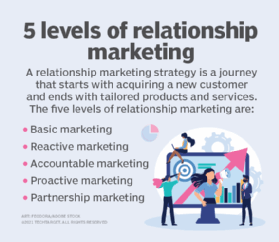Here’s how relationship marketing is critical to balancing ecommerce and brick-and-mortar shopping expectations.
When ecommerce activity skyrocketed during the pandemic, many were quick to call it the death of brick-and-mortar retail. But now that the 20%+ growth rates in ecommerce have fallen into single digits, many others are saying it was all just a fad.
The problem with both accounts is that they pit the ecommerce vs. brick-and-mortar as competing formats rather than recognizing their co-existence as concurrent, even complementary, channels.
It’s not about the channel. It’s about the customer.
As more paths to purchase emerge, the customer journey from awareness to sale becomes more complex. Retailers don’t need to pick a winning channel. They need to pick a winning strategy.
Customers don’t want to be forced to choose one over the other. They want more options and less friction. So retailers need a strategy that helps customers shop, buy and receive goods however and whenever they want.
The rise (and plateau?) of ecommerce
When ecommerce first entered the scene, it enjoyed double-digit growth rates for years. It reached a particularly noticeable spike during the pandemic. As pandemic restrictions eased, customers rushed back to stores, and ecommerce growth rates fell back to the levels expected by a more mature industry.
The pandemic disruption of 2020 has now settled to more stable levels, with both ecommerce and retail growth rates forecasted to maintain single-digit levels for the foreseeable future. It’s not a zero-sum game. One is not eating into the other.
Retail’s staying power
While many retail stores did shutter both before and during the pandemic. Data from Coresight Research shows that U.S. store closures between September 2021 to 2022 fell 55%. Despite the growth in ecommerce over the past few years, only 20-25% of sales occur online. That means 75% to 80% of sales still take place in a physical store.
The outlook is that while the rate of growth for ecommerce is slowing, it will continue to grow faster than physical. Meanwhile, physical sales will still grow, but at a slower rate than ecommerce.
Clearly physical retail is holding its own just fine. But the role of the brick-and-mortar store is evolving. Retailers are adapting in different ways. Some have converted stores to ecommerce fulfilment centres. Others are opting for showroom-style stores that display physical products, paired with ecommerce sales and delivery. Others are just opening smaller stores. There’s a lot happening.
What consumers want
In our Consumer Trends Index – Retail Forecast, published earlier this year, we found that 51% of consumers are doing more research before buying, and 47% are waiting for items to go on sale. Also, 50% are “showrooming” or browsing in-store before buying online or elsewhere. Over half (52%) made a purchase directly as a result of an email (up 4% on last year), while 55% used their mobiles to research potential purchases.
For these reasons, marketers must do everything they can to be more personally and contextually relevant to a consumer whose behaviour has become quite unpredictable. That means understanding the role of the store in the buyer journey and rethinking the role of messaging, digital media, loyalty, rewards and more in driving traffic as part of an omnichannel customer experience.
Three things marketers can do right now to make that happen are:
- Build relationships: The first step is building relationships that matter, from knowing who and what to send, to using multi-variant testing, automation and journeys to get noticed.
- Strengthen relationships: Getting noticed is just the first step. Follow with strengthening and deepening the relationships developed, offering multiple channels for sending and actionable data to improve and refine the content that adds value.
- Invest in relationships: Finally, keeping customers means investing in them, through preference and zero-party data that continues to deliver personalized content, as well as offers like coupons and rewards that build brand loyalty.
We live in a fluid world. Things change, formats shift, and technology evolves. Trying to predict or control how consumers respond to these changes is a risky way to respond. Far safer, and more productive, is to focus on the things you can control, which is how you collect, store and use customer data.
Some consumers will go all-in on ecommerce. Others will want a traditional retail experience. Still, others will want a mix of both. It’s not on you to choose the one “right” way for all. Instead, simply ask your customers (through constant interaction) what camp they fall into. Then you can communicate the right offers and experiences that align with the format they prefer.
And when those preferences change, which they often do, you’ll be armed with the information necessary to react appropriately. Ecommerce vs. brick-and-mortar isn’t about predictions or picking winners. It’s about data and relationships and removing friction between what customers want and what you can provide.
By Michelena Howl
COO of Marigold



